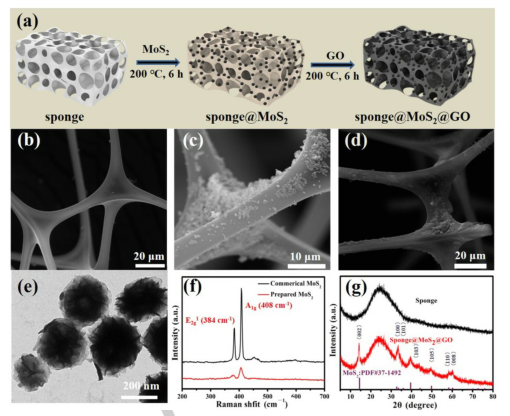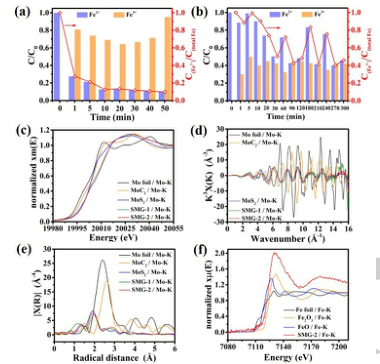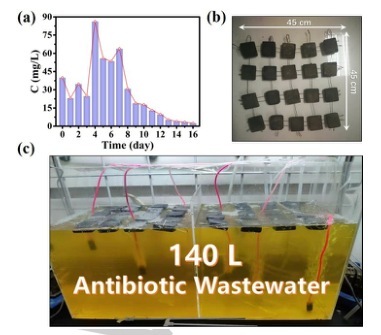3D-MoS2 can adsorb organic molecules and provide multidimensional electron transport pathways, which means it has important potential applications in environmental remediation.
In view of this, Prof. Ming-Yang Xing of East China University of Science and Technology reports the degradation of aromatic organic compounds in AOP by 3D-MoS2 sponges loaded with MoS2 nanospheres and graphene oxide (GO).
Key points of the article
(1) The researchers obtained 3D-MoS2 sponges by dipping blank melamine sponges into MoS2 and GO alcohol solutions sequentially through a two-step simple impregnation method. The 3D catalyst, called ” nSMG” (” n” stands for the number of times the sponge was dipped in the MoS2 solution), was then obtained after a simple heat treatment in an oven at 200 °C. Meanwhile, the samples without GO during the preparation process were denoted as ” nSM”.
(2) SEM images showed that the original network skeleton was completely preserved after loading the sponge with MoS2 and GO; meanwhile, a large number of MoS2 nanospheres were observed on the sponge surface. TEM images showed that the size of ultrathin MoS2 nanoflowers was about 200 nm. The laminar accumulation and irregular edges of MoS2 nanoflowers could improve their surface adsorption capacity and active surface area. In addition, the edges of the petals can provide more unsaturated sulfur active sites.
(3) The exposed Mo4+ active sites on 3D-MoS2 can significantly increase the concentration and stability of Fe2+ in AOP and keep a stable dynamic cycle of Fe3+/Fe2+, which can effectively promote the activation of H2O2/PMS. As a result, the degradation rate of organic pollutants in the system with 3D-MoS2 co-catalyst was 50 times higher than that without the co-catalyst. It maintained high efficiency and stable AOP activity even after 140 L of pilot experiments. After 16 consecutive days of reaction, the degradation rate of 3D-MoS2 for 120 mg/L antibiotic wastewater was 97.87%. Importantly, the operating cost of treating one ton of wastewater was only 0.33 USD, which indicates its great value for industrial application.




